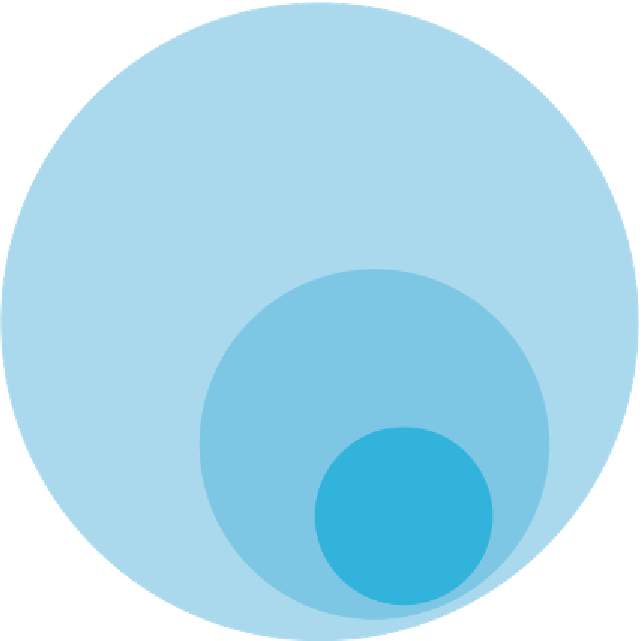Environmental Engineering Reference
In-Depth Information
FIGURE 4.4
From Exploration to Exploitation
How hard is it to fi nd a mineral
deposit? The art and science of fi nding
new mineral deposits is much better
than pure luck, but is still far from
perfect. Successful mining projects can
be spectacularly profi table, but overall,
mining has one of the lowest returns
on investment of all major industries.
Source:
CGER 1999
1,000 Prospects
General Prospecting and Exploration
100 Prospects
Reconnaissance Drilling
10 Prospects
Exploration Drilling
Mine
Even the largest deposit is very small compared to the area that has to be explored to
discover the deposit. The exploration tools of the past such as picks, shovels, and more
recently, simple drilling rigs, were used to locate near surface deposits, often found by sur-
face outcrops or gossans. Freeport's giant copper and gold deposit in Papua was i rst men-
tioned in a journey diary in 1937 by the Dutch explorer, Jean Jacques Dozy:
Close to our right was the Ertsberg. This exposure of ore was an impressive sight… .
as far as I could determine it was all copper ore.
It is still possible to i nd new deposits near the surface by exploring close to previ-
ously discovered mineralization, or old mines and workings (sometimes referred to as
Browni eld exploration as opposed to Greeni eld exploration, which occurs in previously
unexplored areas). However, there is an increasing trend towards exploration for con-
cealed mineral deposits located at considerable depth (also termed 'blind' deposits). In
effect, exploration has shifted from a two-dimensional to a three-dimensional search.
This presents major challenges. Every exploration programme is different and there are
no hard and fast rules governing the process and the outcome. However most programmes
and data evaluation.
Area selection is usually an ofi ce task with minimum i eldwork. In most countries gov-
ernments produce regional geological and geophysical maps outlining the country's geological
framework. In addition, records of previous exploration data may be available. Once an area
has been selected and the right to explore is granted, data gathering or exploration can begin.
Much of the initial exploration data is from remote sensing methods including satellite
imagery, conventional and infra-red aerial photography, and airborne geophysical surveys
Exploration has shifted from
a two-dimensional to a three-
dimensional search.











Search WWH ::

Custom Search